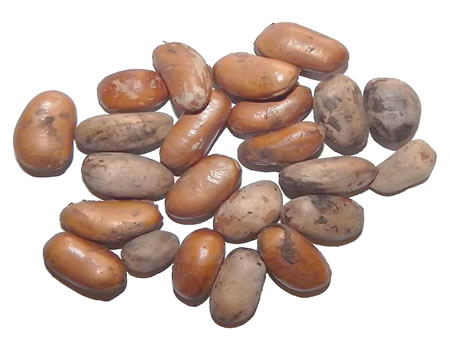FROM years immemorial, several medicinal plants have been used in the treatment and management of the sickle cell disease. Some suppress the symptoms of the disease; some produce a positive effect on the sickled red blood cells.
It is not clear though which plant species actually have a proven effect on preventing red blood cells becoming sickle-shaped or in preventing the symptoms of sickle cell disease.
Now, experts in an assessment of African nutmeg indicate that it prevents sickle cell disease symptoms and its complications by suppressing red blood cells from stiffening into a characteristic sickle shape.
In a new study, researchers said that the antisickling properties of the extracts of African nutmeg can be attributed to the complementary interaction of its major chemical constituents with the red blood cells.
In addition, the effect of the extract was dose-dependent. The more of African nutmeg used, the lower the possibility of the red blood cells stiffening into a characteristic sickle shape and to stick to the inside of blood vessels thereby blocking appropriate blood flow.
The 2018 study published in the journal, Human & Experimental Toxicology involved OL Erukainure, JA Ajiboye, UA Abbah and others. It analysed the chemical constituents of the seeds extract as well as its effect of sickle red blood cells.
Now, African nutmeg is used as a stimulant for relieving constipation and in controlling passive bleeding after childbirth in women. The seeds also work on lower cholesterol level.
Sickle cell disease symptoms are caused by a shortage of good functioning red blood cells, which causes anaemia, blood clotting and blockage of blood vessels. Symptoms vary from fatigue to dizziness and headaches, during a mild sickle cell crisis.
A drastic sickle cell crisis entails an episode of severe pain. These crises occur when sickled red blood cells block the blood flow to the limbs and organs, which causes the pain and eventually irreversible organ damage.
Sickle cell disease cannot be cured, so the goal of treatment is to manage and control symptoms, and to limit the number of crises. Individuals with sickle cell disease need continuous treatment, even when they are not experiencing a painful crisis.
The treatment includes pain medicines, fluids for hydration, a blood transfusion to replace the sickled cells, multiple vaccines and antibiotics.
Meanwhile, taking gum Arabic regularly also has the potential for treating sickle cell disease in more than one way. Experts said that Gum Arabic could also increase the production of foetal haemoglobin.
Foetal haemoglobin, a form of haemoglobin with a greater affinity for oxygen compared to adult haemoglobin. It appears to prevent red blood cells from forming the sickle shape thereby decreasing the chance of sickle cell crisis.
Hydroxyurea is an FDA approved drug that can increase foetal haemoglobin, however, since the drug is expensive and patients require frequent monitoring for toxicity hydroxyurea is not a realistic treatment for individuals in developing countries.
Gum Arabic is a dried exudation obtained from the stem and branches of Acacia Senegal and Acacia Seyal. It has wide industrial uses as a stabilizer, thickening agent and emulsifier, mainly in the food industry such as in soft drinks syrup and gummy candies.
It is claimed to have anti-cancer, anti-malarial, immune-modulatory, and antioxidant effects. Also, it is shown to have ameliorated anaemia under some conditions.
Gum Arabic, however, is considered a safe dietary fibre, and proven to have reduced the high levels of oxidative stress in the 45 patients carrying haemoglobin SS individuals that were recruited for a study carried out on subjects recruited from the outpatients’ clinics of the Military Hospital in Khartoum-Sudan.
Individuals with SCD have high levels of oxidative stress due to the formation of reactive oxygen species such as hydrogen peroxide. High levels of oxidative stress can have serious physiological repercussions such as multiple organ damage.
Oxidative stress is one of the factors that modulate the expression of sickle cell disease, including the possibility of a sickle cell crisis happening, and chest pain.
According to 2017 BMC Haematology journal, daily administration of Gum Arabic for 12 weeks resulted in an increase in total anti-oxidants and a reduction of the oxidative stress in this study that recruited 45 patients carrying haemoglobin SS.






